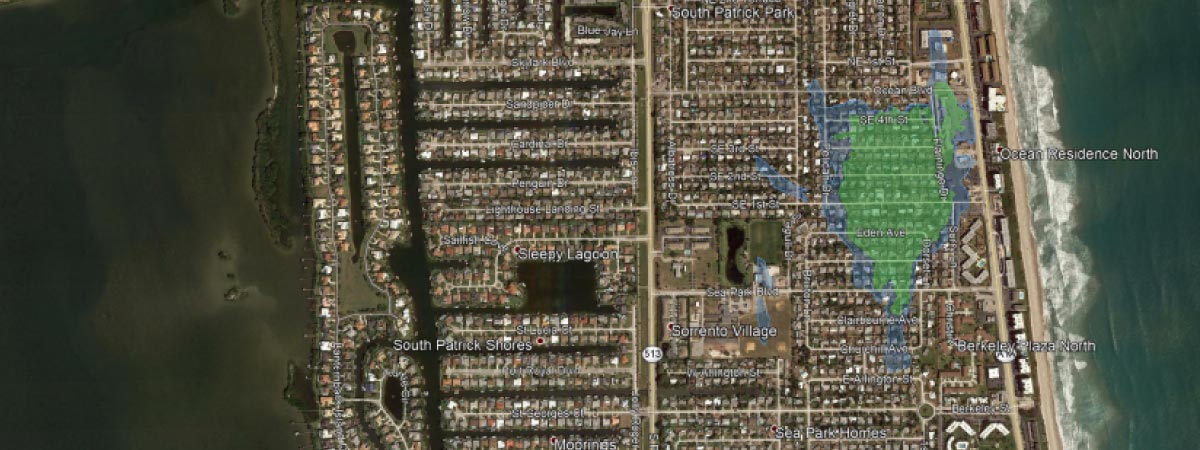
NAS Banana River FUDS Site
In the 1940s, the Navy utilized land south of the Banana River Naval Air Station base now known as the Naval Air Station Banana River Off-Base Disposal Area Formerly Used Defense Site (FUDS). It is approximately 50 miles southeast of Orlando on Florida's Space Coast in Brevard County just south of Patrick Space Force Base (formerly Patrick Air Force Base) and north of the City of Satellite Beach.
For more information, please visit the US Army Corps of Engineers Jacksonville District website.
About NAS Banana River
Established during World War II, the Naval Air Station Banana River served as a crucial training and operational hub for naval aviation. The base played a pivotal role in advancing military aviation and contributed significantly to national defense efforts during the mid-20th century.
With the cessation of military operations, the Naval Air Station Banana River was officially closed in 1947. However, the impact of decades of military activity left a lingering environmental legacy. As a designated Formerly Used Defense Site (FUDS), the area necessitated focused attention and comprehensive assessment to identify and address potential environmental hazards.
The FUDS designation of the former Naval Air Station Banana River identifies a range of potential environmental hazards that require attention. These include concerns related to soil and groundwater contamination, unexploded ordnance, and infrastructure deterioration.
Contamination and Cleanup Efforts
One of the primary environmental concerns at the FUDS site is the presence of hazardous substances, including petroleum products and various chemicals. These contaminants can pose risks to both the environment and public health if not properly addressed. Remediation efforts, spearheaded by government agencies and environmental specialists, aim to mitigate these risks through measures such as soil removal, groundwater treatment, and infrastructure improvements.
Over the years, the base's activities have led to the use and storage of various chemicals and hazardous materials. These include fuels, solvents, firefighting foams, and other substances integral to military operations. Unfortunately, improper disposal practices and accidental releases have contributed to the presence of contaminants in the soil and groundwater.
One of the most significant concerns at Patrick Air Force Base is the presence of per- and polyfluoroalkyl substances (PFAS), a group of synthetic chemicals used in firefighting foams. PFAS compounds, known for their persistence and potential health risks, have been identified in both on-base groundwater and nearby off-base areas.
Environmental and Health Risks
The contamination at Patrick Air Force Base poses a twofold risk: environmental and public health. PFAS compounds, due to their longevity and water-solubility, can spread through groundwater, potentially affecting nearby ecosystems. Moreover, human exposure to PFAS has been associated with a range of health issues, including developmental problems, liver damage, and certain types of cancer.
Given the historical military use of the area, the presence of unexploded ordnance is a significant concern. UXOs, ranging from bombs to artillery shells, pose potential risks to public safety and the environment. Specialized teams work diligently to identify and safely dispose of these remnants, ensuring the safety of current and future generations.
Local communities surrounding the former Naval Air Station Banana River play a crucial role in the ongoing remediation efforts. Open communication, public forums, and outreach initiatives are integral in keeping residents informed about progress and addressing concerns.
